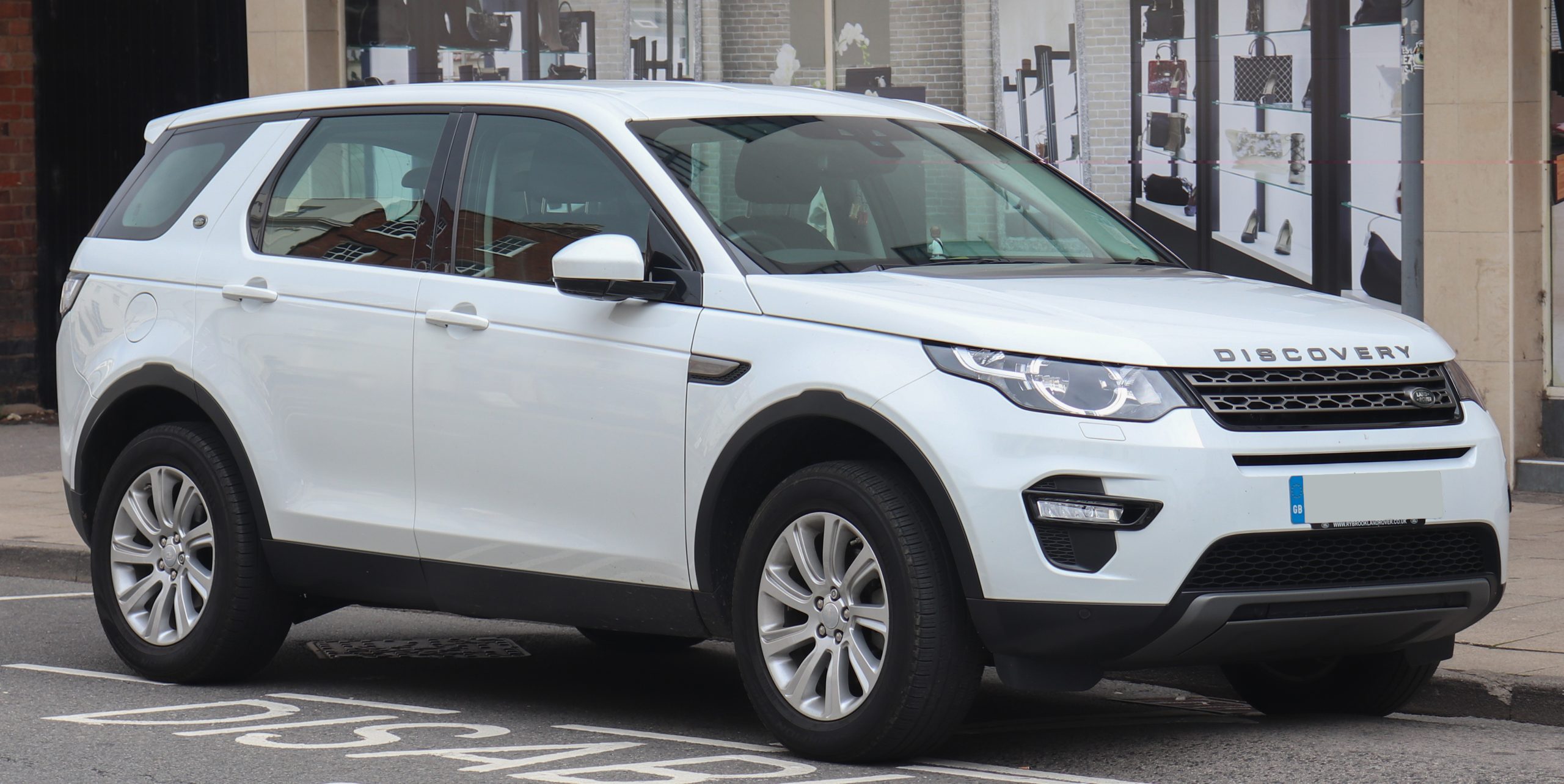Brakes are among the most critical safety components on any vehicle, directly affecting your ability to stop safely and avoid accidents.
When it comes to brake maintenance and repair, some jobs are straightforward enough for an experienced DIYer to handle confidently, while others require specialized knowledge, tools, and equipment to complete safely and correctly.
Understanding which brake jobs you can tackle yourself—and which ones are best left to professional mechanics—is essential for maintaining your vehicle’s safety and performance without unnecessary risk or expense.
Basic brake jobs such as replacing brake pads or resurfacing rotors can often be done at home with common hand tools and some mechanical know-how, saving money and giving a sense of accomplishment.
On the other hand, more complex jobs, like replacing brake calipers integrated with electronic parking brakes, servicing ABS modules, or handling hydraulic system repairs, involve delicate components and safety-critical systems that demand professional attention.
In this article, we explore five brake jobs that most DIY enthusiasts can successfully complete, highlighting what makes them accessible and manageable.
We then contrast that with five brake repairs that pose significant challenges and risks, where attempting a DIY approach could lead to serious safety hazards or costly damage.
Knowing the difference helps you make informed decisions about your vehicle’s brake care and your own mechanical limits.
Also Read: 5 Cars Where Minor Repairs Total Over $1,000 And 5 That Stay Manageable
5 Brake Jobs You Can Do Yourself
Brake maintenance is essential to vehicle safety, but not all brake repairs are created equal in terms of complexity and risk. For those with a moderate level of mechanical skill and the right tools, several brake jobs can be safely and effectively completed at home.
These tasks generally involve components that are easily accessible, straightforward to replace, and don’t require specialized diagnostic equipment or knowledge of complex hydraulic systems.
Successfully performing these jobs yourself can save significant labor costs, boost your confidence in vehicle maintenance, and help you stay more connected to your car’s health.
Common brake jobs suitable for DIYers often include replacing front or rear brake pads, changing rotors or drums, and servicing basic brake hardware such as caliper pins or springs.
These procedures usually involve removing the wheel, loosening a few bolts, swapping out worn parts, and reassembling everything to manufacturer specifications.
The parts and tools required are widely available, and many vehicles share similar brake designs, making these repairs accessible for a broad range of drivers.
However, the ease of these tasks also depends on the specific vehicle and brake system design.
Some cars feature straightforward setups where pads and rotors can be swapped in less than an hour, while others might have slightly more involved processes that still fall within the DIY realm.
In the next section, we’ll focus on five vehicles with brake jobs you can realistically and safely perform yourself, explaining what makes these jobs manageable, the common pitfalls to avoid, and tips for getting the job done right.
1. Toyota Camry (2012–2017) — Front Brake Pad and Rotor Replacement
The Toyota Camry from 2012 to 2017 is a favorite among DIY mechanics, especially when it comes to brake maintenance. Its straightforward front brake system design makes replacing brake pads and rotors a manageable task that even intermediate home mechanics can confidently tackle.
This model uses conventional disc brakes with easily accessible calipers and rotors, making the job less time-consuming and technically demanding.
One of the reasons the Camry’s brake job is ideal for DIYers is the accessibility of components.
Removing the wheel exposes the caliper, which can be detached using standard tools like a ratchet, socket set, and a C-clamp or brake caliper piston tool to compress the caliper piston.
The rotors are held in place with simple bolts or sometimes just by the wheel lug nuts, making their removal relatively simple.
Toyota’s clear service manuals and abundant online tutorials also provide step-by-step guidance, which is invaluable for DIY enthusiasts. Replacement brake pads and rotors for the Camry are widely available at affordable prices from OEM and aftermarket sources.

The absence of complex electronic parking brakes or integrated sensors on many Camry trims simplifies the process and reduces the risk of errors during reassembly.
Moreover, the Camry’s brake system does not usually require bleeding after pad or rotor changes unless the caliper is disconnected from the hydraulic line, another plus for DIYers. Routine maintenance tips, such as checking brake fluid levels and lubricating caliper slides, help extend the life of the brakes and ensure smooth operation.
Because of these factors—accessible design, abundant resources, and affordable parts—the Toyota Camry’s front brake pad and rotor replacement remains one of the most approachable brake jobs for vehicle owners who want to save money and maintain safety by doing it themselves.
2. Honda Civic (2016–2021) — Rear Brake Pad Replacement
The Honda Civic, especially models from 2016 to 2021, is another excellent candidate for DIY brake maintenance, particularly when it comes to rear brake pad replacement.
The Civic’s rear brakes use disc brakes on most trims, featuring a simple caliper and rotor setup that allows owners with basic mechanical skills to perform pad changes without professional help.
One key reason the Civic’s rear brake job is approachable is the relatively simple caliper design and ease of access. Once the wheel is removed, the caliper can be unbolted with common hand tools like a socket wrench and ratchet.
Honda’s brake caliper pistons require careful compression to make space for the new pads, but with the right tool — typically a piston rewind or a large C-clamp — this process is straightforward.
Additionally, the rear brakes on the Civic generally do not have complex electronic parking brake mechanisms, which can complicate maintenance on other vehicles. This absence means you don’t need specialized diagnostic tools or software resets, which often discourage DIY efforts.

Honda also benefits from widely available OEM and aftermarket brake components that fit perfectly, reducing the likelihood of compatibility issues.
Brake pads and rotors for the Civic are competitively priced, and many parts kits come with hardware and instructions, helping even first-time DIYers avoid common mistakes.
The Civic’s braking system usually doesn’t require brake fluid bleeding when changing rear pads unless the hydraulic lines are disconnected. This simplifies the job, reducing the chances of introducing air into the system and avoiding a costly visit to a mechanic.
In summary, the Honda Civic’s combination of accessible design, straightforward procedure, and affordable parts makes rear brake pad replacement a practical and rewarding project for DIY enthusiasts looking to save on labor costs while maintaining safe braking performance.
3. Ford F-150 (2015–2020) — Front Brake Pads and Rotors
The Ford F-150, one of America’s best-selling trucks, is known for its robust design and relatively simple brake system, making front brake pad and rotor replacement a feasible task for many DIYers. Models from 2015 to 2020 feature disc brakes on all four wheels, with front brakes designed for accessibility and straightforward maintenance.
A major factor that makes the F-150’s brake job DIY-friendly is the spacious wheel well and accessible caliper mounting bolts. Removing the wheel reveals a brake caliper that can be unbolted with standard tools such as a socket wrench.
Compressing the caliper piston to fit new pads is accomplished with a C-clamp or a piston tool, similar to many other vehicles.
The rotors typically come off easily once the caliper and bracket are removed, and in many cases, they are held by screws or simply by the hub and wheel pressure, making rotor removal straightforward.
Another reason the F-150 is popular among DIYers is the truck’s lack of complicated electronic parking brake systems on many trims, simplifying the brake job considerably. Owners also benefit from a vast aftermarket parts market with widely available affordable brake pads and rotors, both OEM and aftermarket.

The truck’s brake system is designed so that bleeding is rarely necessary after a pad or rotor change unless brake lines are disturbed. This reduces the complexity and time required for the job.
Moreover, the F-150’s heavier-duty brake components mean that pads and rotors tend to last longer, so owners typically perform brake jobs less frequently but can handle them when needed. There are many detailed how-to guides and videos available, making the process accessible even for first-time DIY mechanics.
In summary, the Ford F-150’s combination of simple caliper design, spacious workspace, and widely available parts makes front brake pad and rotor replacement a manageable, cost-saving project for many vehicle owners.
4. Subaru Outback (2015–2019) — Front Brake Pad Replacement
The Subaru Outback from 2015 to 2019 offers a practical and DIY-friendly brake maintenance experience, especially when it comes to front brake pad replacement.
Subaru’s engineering on this model focuses on reliability and ease of service, making it accessible for those with moderate mechanical skills and basic tools.
The front brake system uses a traditional disc brake setup with calipers that are relatively easy to access after wheel removal. Once the wheel is off, the caliper bolts are straightforward to reach and remove, often requiring only a standard socket wrench and ratchet.
Compressing the caliper piston is necessary to fit the new pads and can be done using a C-clamp or a dedicated piston tool. Subaru brake systems on these models usually don’t have integrated electronic parking brakes on the front, which keeps the procedure simple.
Subaru also benefits from a strong aftermarket parts supply, offering affordable brake pads and rotors compatible with the Outback. The availability of OEM-quality parts at competitive prices makes this brake job cost-effective.
Additionally, the brake rotors on the Outback are typically held securely but are not difficult to remove once the caliper and bracket are detached.
The brake system rarely requires bleeding after front pad replacement unless the hydraulic lines are disconnected, which simplifies the job and reduces the risk of errors. Subaru owners can find many detailed repair guides and community support online, which makes this brake job less intimidating.

In summary, the Subaru Outback’s practical brake design, combined with the availability of affordable parts and clear service instructions, makes front brake pad replacement a feasible DIY project. It allows owners to maintain safety and performance while saving on labor costs.
5. Hyundai Elantra (2017–2022) — Rear Brake Pad Replacement
The Hyundai Elantra, particularly models from 2017 to 2022, is known for its user-friendly design when it comes to routine brake maintenance such as rear brake pad replacement.
The Elantra employs a simple disc brake system on the rear wheels for most trims, making pad replacement accessible to DIY enthusiasts with basic mechanical skills and common tools.
One of the key reasons the Elantra’s rear brake pad job is manageable is the straightforward caliper design. Once the wheel is removed, the caliper can be easily unbolted using standard socket wrenches.
Compressing the caliper piston to fit the new pads is a necessary step, which can be done with a C-clamp or a piston compression tool. Hyundai’s brake system on these models generally avoids complex electronic parking brakes on the rear, which simplifies the procedure significantly.
Replacement parts for the Elantra are widely available and affordable, with many OEM and aftermarket options. Brake pads and rotors for this vehicle can be found at local auto parts stores or online, often bundled in kits that include necessary hardware, making the process more straightforward.
The Elantra’s brake system usually does not require bleeding when only replacing the rear pads, unless hydraulic lines are disturbed, reducing the potential for errors and added labor.

In addition, Hyundai provides clear service manuals and the community of Elantra owners is active in sharing tips and step-by-step instructions, making it easier for first-time DIY mechanics to gain confidence.
Overall, the Hyundai Elantra’s simple rear brake design, easy part availability, and clear procedural guidance make rear brake pad replacement an achievable and cost-effective brake job for most DIYers.
5 Brake Jobs You Should Never Attempt
While some brake repairs are within the reach of a dedicated DIYer, others demand professional expertise, specialized tools, and extensive knowledge of complex brake systems.
Attempting certain brake jobs without the proper training can jeopardize vehicle safety, cause costly damage, or lead to system malfunctions that put you and others at risk on the road.
It is critical to understand which brake repairs fall into this high-risk category so you can avoid dangerous mistakes and know when to seek professional help.
Brake jobs that involve electronic parking brake systems, ABS (anti-lock braking system) modules, brake hydraulic lines, and complex caliper assemblies typically require diagnostic equipment, precision tools, and expertise beyond most home mechanics.
These systems often involve sensors, hydraulic circuits, and computer-controlled components that must be serviced with exacting care to maintain proper function and safety. Improper handling can trigger warning lights, cause brake failure, or result in expensive repairs.
Furthermore, brake repairs that require complete disassembly of the brake assembly, bleeding the brake lines, or resetting electronic systems are best left to certified technicians who have access to manufacturer service information and specialized tools.
Certain vehicles also integrate braking components with advanced driver-assistance systems (ADAS), increasing complexity and the potential for errors.
In this section, we will cover five vehicles whose brake repairs fall into this “do not attempt yourself” category.
For each, we will explain why these brake jobs are challenging and risky, what tools and knowledge are required, and why entrusting them to professionals is the safest choice.
Understanding these limits ensures that you maintain brake safety while avoiding costly or dangerous DIY pitfalls.
1. BMW 3 Series (2016–2019) — Electronic Parking Brake and Rear Brake Service
The BMW 3 Series from 2016 to 2019 is equipped with an electronic parking brake (EPB) system that complicates rear brake service significantly. Unlike traditional mechanical parking brakes, the EPB uses electric motors integrated into the rear calipers, controlled by the vehicle’s computer system.
This advanced setup requires specialized diagnostic tools to safely disengage the parking brake before performing any brake work.
Attempting to replace rear brake pads or rotors on this BMW without the proper EPB reset tools risks damaging the caliper motors or triggering warning lights on the dashboard.
The system must be put into “service mode” using BMW’s diagnostic software or an equivalent scan tool to release tension on the caliper pistons. Without this step, the electric motors can be overstressed, leading to costly repairs.
Additionally, the rear caliper assembly is more complex than on many conventional vehicles. It integrates sensors that communicate with the car’s ABS and stability control systems, meaning any disconnection or improper reinstallation can cause system malfunctions or safety risks.

Brake fluid bleeding is often necessary to avoid air in the hydraulic system after any brake service on these models.
Given the high cost of replacement parts and the need for precision during reassembly, rear brake maintenance on the BMW 3 Series EPB system is best left to trained technicians. Professional service ensures the EPB functions correctly, brake performance remains optimal, and warranty conditions are preserved.
In summary, the electronic parking brake system and complex sensor integration make the BMW 3 Series’ rear brake job a task that DIYers should avoid. It requires specialized equipment, knowledge, and experience to perform safely and effectively.
2. Audi A4 (2017–2021) — Rear Brake Replacement with Electronic Parking Brake
The Audi A4 models from 2017 to 2021 are equipped with an electronic parking brake system integrated into the rear brake calipers, making brake pad and rotor replacement a challenging task for DIY mechanics.
Unlike traditional mechanical parking brakes, the EPB requires the caliper pistons to be retracted electronically using a scan tool before pads can be replaced.
Attempting this job without the right equipment risks damaging the electronic actuators and triggering fault codes in the vehicle’s onboard computer.
Additionally, Audi’s brake system often features complex sensor wiring for the ABS and stability control systems, which must be handled carefully during brake servicing to avoid malfunctions.
Improper disconnection or reconnection of these sensors can cause warning lights, system failures, or even compromised vehicle safety.
Bleeding the brake fluid is often mandatory after servicing the rear brakes on these models, as any air introduced into the hydraulic system can severely impact braking performance.
The process of properly bleeding and resetting the ABS and EPB modules requires specialized tools and expertise.

Parts for the Audi A4’s braking system, especially genuine OEM components, tend to be expensive. Moreover, replacing brake components on these vehicles requires precision to maintain proper function and safety.
Because of these complexities, rear brake maintenance on the Audi A4 should be entrusted to certified technicians who have the diagnostic tools and experience necessary to handle the electronic parking brake system and integrated safety sensors correctly.
In short, the advanced EPB system, integrated sensor wiring, and need for hydraulic bleeding make the Audi A4 rear brake job a high-risk DIY task best left to professionals.
3. Mercedes-Benz C-Class (2015–2018) — Brake System with Electronic Parking Brake and Complex Bleeding
The Mercedes-Benz C-Class from 2015 to 2018 is equipped with a sophisticated brake system featuring an electronic parking brake (EPB) and advanced ABS modules, making brake service far more complicated than on traditional vehicles.
The EPB actuators integrated into the rear calipers must be electronically released before pad replacement, requiring manufacturer-level scan tools or specialized diagnostic devices.
Attempting to service the brakes without these tools risks damaging the EPB motors, which can be costly to replace.
Furthermore, the C-Class brake system includes sensors for traction and stability control, requiring careful disconnection and reconnection during brake work. Mishandling these sensors can cause fault codes and affect vehicle safety systems.
Another significant challenge is the brake fluid bleeding procedure. The Mercedes-Benz C-Class often requires a multi-step, computer-controlled brake bleed using diagnostic equipment to ensure that air is fully purged from the ABS hydraulic circuits.
Manual bleeding alone is generally insufficient, and improper bleeding can lead to a spongy brake pedal or brake failure.

Additionally, the complexity of the caliper assemblies and mounting hardware demands precise knowledge and care during removal and installation. Using incorrect tools or improper techniques can lead to damaged parts or compromised brake performance.
Given the technical demands, rear brake service on the Mercedes-Benz C-Class is not recommended for DIY mechanics.
Professional service centers are equipped with the required tools and expertise to handle the EPB system, sensor integration, and specialized bleeding procedures correctly, ensuring the vehicle’s braking system functions safely and reliably.
4. Tesla Model 3 (2018–Present) — Regenerative Braking and Electronic Parking Brake Complexity
The Tesla Model 3, a pioneer in electric vehicle technology, introduces unique challenges when it comes to brake servicing, particularly with rear brakes.
Unlike traditional vehicles, the Model 3 relies heavily on regenerative braking, which reduces wear on physical brake components but adds complexity to brake maintenance.
Tesla’s rear brakes are integrated with an electronic parking brake (EPB) system controlled by the vehicle’s software.
To replace rear brake pads or rotors, technicians must use Tesla-specific diagnostic tools to disable the EPB and activate service mode, allowing safe retraction of the caliper pistons. This step is critical to avoid damage to the electric caliper actuators.
Furthermore, the regenerative braking system means the brake pads experience less wear, but they can corrode or seize if the vehicle is not driven regularly. This requires specialized knowledge to diagnose and service properly.
Additionally, Tesla’s brake system includes sensors and software calibrations that must be reset after any brake work, tasks that are beyond the capabilities of most DIYers.
Brake fluid bleeding is also more involved, with Tesla recommending procedures that often require the use of diagnostic equipment to ensure the hydraulic system is free of air and functioning correctly.

Because the brake system interfaces with the vehicle’s software extensively, any improper service can cause warning lights or degraded braking performance.
Due to these advanced technologies, Tesla Model 3 brake repairs, especially those involving the rear brakes and EPB system, are best left to Tesla service centers or highly experienced professionals with access to Tesla’s diagnostic tools.
5. Land Rover Discovery (2017–2020) — Complex Brake System with Electronic Parking Brake
The Land Rover Discovery models from 2017 to 2020 feature a highly advanced braking system equipped with an electronic parking brake (EPB), air suspension integration, and multiple safety sensors. This combination significantly complicates brake service, making it unsuitable for DIY attempts.
The EPB calipers require a specialized scan tool to engage service mode and retract the pistons before pads or rotors can be replaced. Without this step, the calipers can be damaged, leading to expensive repairs.
Additionally, the Discovery’s brake system interfaces with the vehicle’s air suspension and stability control modules, meaning brake work must be done carefully to avoid triggering fault codes or affecting ride quality.
The hydraulic brake system also requires thorough bleeding using diagnostic equipment to clear air from ABS circuits, as manual bleeding may be ineffective due to the system’s complexity. Failure to properly bleed the brakes can compromise stopping power and safety.

Parts for the Land Rover Discovery’s braking system tend to be costly and may require sourcing from specialized suppliers or dealers, increasing repair time and expense.
The assembly and disassembly process involves handling numerous electrical connectors and sensor wiring, demanding detailed knowledge to avoid damage.
Given these factors, brake service on the Land Rover Discovery is best handled by certified Land Rover technicians who have access to the proper diagnostic tools, technical documentation, and expertise necessary to maintain the system’s integrity and safety.
Understanding the complexity and safety-critical nature of brake systems is essential for any vehicle owner or DIY enthusiast.
The contrast between brake jobs you can do yourself and those that require professional intervention highlights the importance of knowing your vehicle’s brake system inside and out.
This awareness not only saves time and money but, more importantly, protects your safety on the road.
The five vehicles discussed in the “Brake Jobs You Can Do Yourself” section demonstrate that many cars still feature straightforward brake designs.
These vehicles often use traditional mechanical parking brakes, accessible calipers, and brake components that can be replaced with common hand tools and without extensive system resets.
For example, models like the Toyota Camry or Ford F-150 offer brake servicing that doesn’t require complex diagnostic tools or specialized knowledge, making them ideal candidates for DIY maintenance.
Owners of these vehicles can benefit greatly from doing their own brake pad and rotor replacements, gaining confidence while avoiding labor costs.
On the other hand, modern vehicles increasingly incorporate advanced technologies such as electronic parking brakes, regenerative braking, and integrated ABS and stability control sensors.
The “Brake Jobs You Should Never Attempt” section highlights vehicles like the BMW 3 Series, Audi A4, Tesla Model 3, and Land Rover Discovery, whose brake systems demand professional diagnostics, precise handling, and calibrated bleeding procedures.
Attempting brake repairs on these cars without the proper tools or expertise can cause system malfunctions, trigger warning lights, or result in costly damage.
For these vehicles, relying on qualified technicians ensures that the brake systems remain safe and effective, preserving both performance and vehicle warranties.
In today’s automotive landscape, the decision to DIY or seek professional brake service hinges largely on your vehicle’s brake system complexity.
While some brakes remain accessible for home mechanics, others have evolved into intricate systems requiring specialized knowledge and tools.
By understanding these differences and recognizing when a brake job is beyond your capabilities, you ensure safer driving experiences and avoid preventable repair expenses.
This balanced approach empowers car owners to take control of their maintenance where appropriate while respecting the limits of their skills and tools.
Also Read: 5 Cars That Still Get Good Mileage at 200K Miles and 5 That Don’t Move Without Fuel

